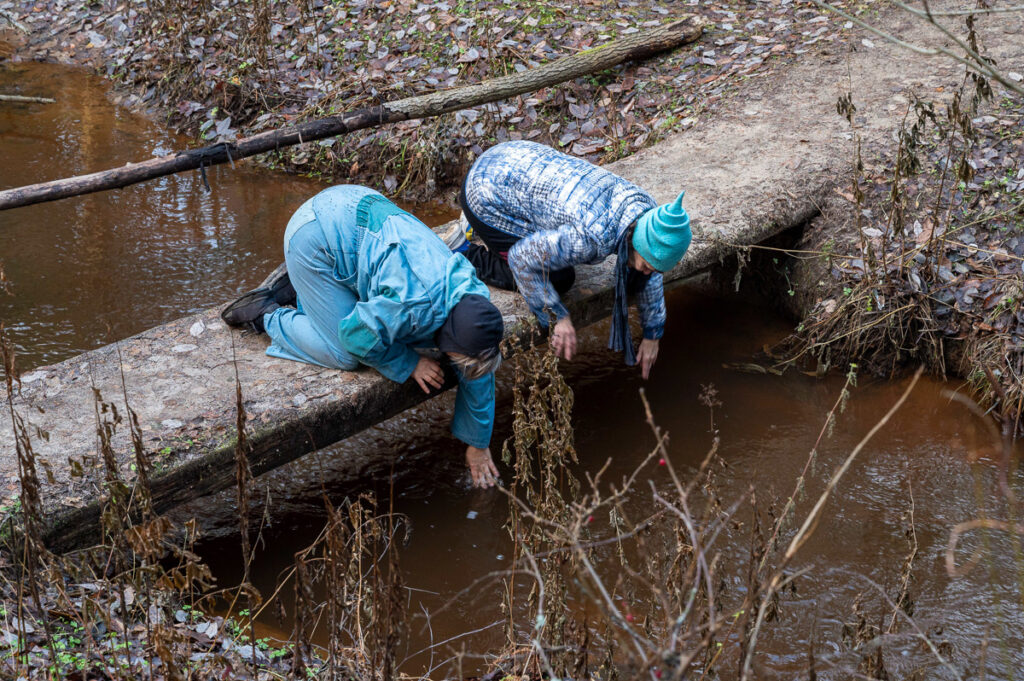
It questions the position of the audience
There are endless opportunities to explore how relation of the artist and the audience make the content of the work more meaningful:
Peep into my world. Many one-to-one works allow the one person audience just to watch the performance while keeping a safe distance. Even still the format helps artists to draw meaning from the position of the viewer: because they is just one, they can be someone.
Somatic art encounters. One-to-one makes it possible to interact with the body of the participant in a more reactive and sensitive way than when performing to larger audiences. Artists can stimulate all the senses of participants. This gives unique opportunities also to other artforms besides performance: You can whisper a poem, you can compose music that is played by manipulating the body of the listener, you can place a sculpture into someone’s lap and let her feel the weight and the texture. For the audience this means that you can be part of a performance without becoming a performer. Perhaps your body is the stage. Or then you are equal with the artist, sharing a bodily moment. But you don’t have to perform to anyone outside the one-to-one you are having with the artist. You can concentrate on what is happening right now.
Gato escaldado_ One-to-One Festival 2024
Creating together. In many one-to-one works an artist makes art with a participant by painting, dancing, writing together… Here an artwork means an imaginative frame or method through which two people can contribute to a shared drawing, a sculpture, a song… Often the results can later be presented to a larger audience, which opens up the exclusive format.
Let’s talk inside art. An art moment between two people can take the form of a conversation as meaningful and intimate as a religious confession or a therapy session. Art can be a ritual for a dialogue. Many one-to-one works are at their core simply an offer to listen to a person if they wishes to share a personal experience, a thought, perhaps a life story. Perhaps the artist replies with his own story, or perhaps she makes a dance, object theatre or a poem out of what she heard. But sometimes it is enough just to listen.

It adapts to sites & situations
One-to-One works can take on different meanings in different environments.
One-to-one makes sites specific. What kind of one-to-one exists in schools or offices? Or in the woods or on the streets? How can these behavioral patterns be deepended or altered by art? How could we do it together, just the two of us?
One-to-one art is a highly accessible artform. Great portion of one-to-one art is currently made in the social and health sector, in the spaces meant for care. When you sing by a hospital bed or dance with a person who has Alzheimer’s disease, you need to go one-to-one simply to be able to react to the person’s needs. You need to make the moment easier and more caring to make it mean something. On the same note artists generally try to help their visitors to take part in their works as fully as possible also outside the social and health sector. We all have accessibility needs. These can often be taken into account better one-to-one.
One-to-one is a marginal but established form of contemporary art. It can and should be done also in traditional venues built for art. Attention should be paid to material needs and little details. Sometimes it can be wildly expensive and grandiose, often cheap and simple. What counts is passion and care. It can be comforting, sad, funny, meditative, disturbing, edgy, sexy. It’s not for everyone, it’s for you.

Some audience feedback from the Kehä festival 2024
Can something like this be?”
It’s so different to be part of than just watch.”
Now I remember the feeling. It felt like a dream.”
Everything in me was paid attention to.”
This was shaking my thoughts on how we are present with other organisms in this world.”
This was my first time and I was positively surprised. Normally I don’t want to take part in a performance (in theatre etc.), so this was a good way to start and push myself.”
I felt safe in every piece because I could take part just as much as I wanted.”
It was scary but people go to a massage and a beautician too, so I felt I could do it.”
It raises your self esteem. Is this moment really just for me?”
I’m not always wrong.”

